Sarah Courchesne
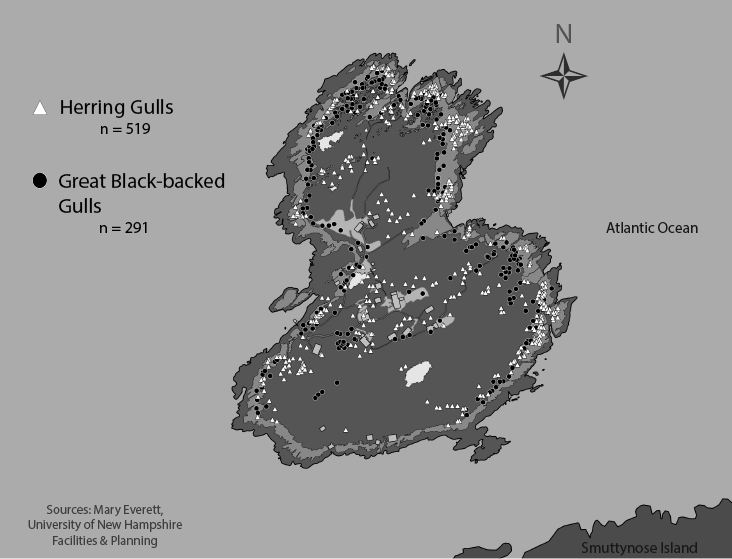
Figure 1. Map of all gull nests on Appledore Island in 2018. Great Black-backed Gull nests are shown as dots and Herring Gull nests as triangles. Photograph by Mary Everett.
As scientists, we try not to make moral judgments about the organisms we study. When I tell members of the general public that I work with the Gulls of Appledore Project, however, it is clear that many people practice no such restraint. They offer plaintive objections that we are wasting our time studying "trash birds," and make frequent comparisons to rats and pigeons. Notwithstanding that rats and pigeons are fascinating creatures themselves, the category of being to which people assign gulls is clear. It's true that gulls are conspicuous denizens of parking lots, dumps, beaches, and landfills. They abscond with unattended—or even well-guarded—picnic fare, and they are generalists that will eat almost anything, or so their reputation would indicate. In our work with gulls on Appledore Island in Maine, we find that aspects of their reputation may be deserved, but that most people's understanding of gulls is partial, skewed, and biased, and that includes our own.
Appledore is a tubby looking island on a map—roughly rubber-ducky-shaped, one of my students decided. It is the largest of the Isles of Shoals, an archipelago straddling the line between New Hampshire's and Maine's jurisdictions. In summer, the island is crawling with undergraduates taking classes and working research internships through the Shoals Marine Laboratory, a project jointly overseen by the University of New Hampshire and Cornell University. Spring and fall migration seasons bring a cadre of songbird banders who work the mist nets from predawn until well past supper time. Tourists visit the historic site of nineteenth-century poet Celia Thaxter's garden (immortalized in paintings by American impressionist Childe Hassam), and groups of sustainability-minded engineering students work on thorny problems of life on an island six miles out.
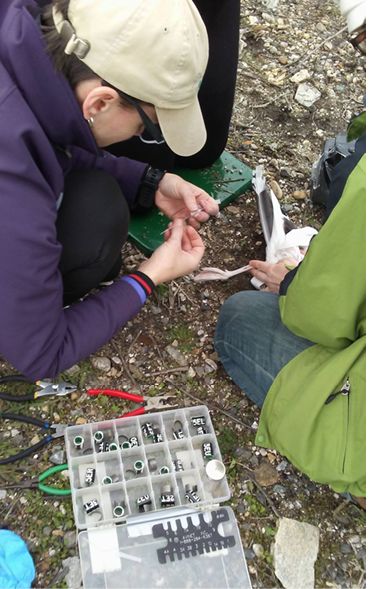
Figure 2. Banding and blood sampling a Great Black-backed Gull. Only a very small amount of blood is required to perform DNA sexing on the bird. Photograph by Luis Robles.
For our team of researchers, student assistants, and interested gull enthusiasts, however, Appledore is first and foremost a gull colony. Herring Gulls build their grassy cup nests on the island's exposed rocky skirt, and Great Black-backed Gulls select the more vegetated sites a bit farther back (Figure 1). The gulls of Appledore are habituated to humans and will tolerate foot traffic close to their nests. Still, visitors to the island receive a cautionary talk upon arrival advising them to hold sticks above their heads while walking to draw the ire of particularly defensive gull parents—the birds will strike the highest point on their target—and to wear a bicycle helmet when entering the densest areas of the colony.
Our research on the gulls of Appledore was started by Dr. Julie Ellis, an ecologist, now at the University of Pennsylvania, who was interested in how gulls affected the island's ecology and trophic web. She started banding individual birds in 2004, and since then thousands of gulls have been captured, measured, and blood-sampled for DNA determination of sex by the project's team members (Figure 2). The focus of the project has changed over the years as different scientists have pursued their own interests. Sometimes the studies were on behavior, sometimes on eggshell pigment, sometimes on the observed hybridization between a Herring Gull and a Lesser Black-backed Gull—the first such successful breeding documented in North America, aside from Greenland. The project has now passed from Dr. Ellis into new hands, and is co-led by me, from my base at Northern Essex Community College in Massachusetts, and Mary Everett, a recent graduate of the University of Massachusetts, Lowell who has expertise in geographic information systems and mapping.
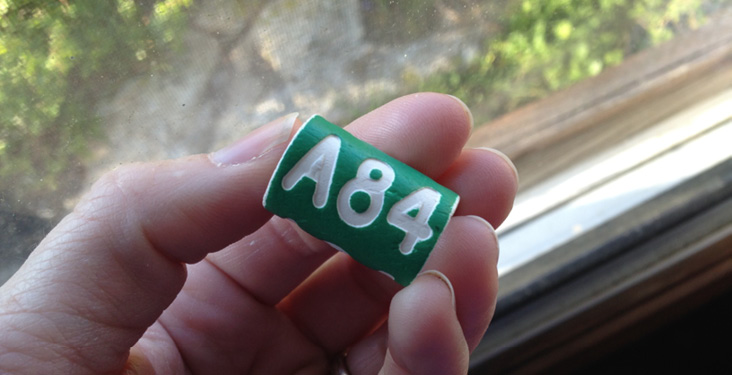
Figure 3. A worn band. Placed on a Herring Gull chick in 2005, it was removed and replaced after 11 years. The bird now wears band 13J.
Our current focus is on the Great Black-backed Gulls, in part because they are easier to trap and band, but mainly because far less is known about them as compared with their well-studied Herring Gull cousins. As we have for several years now, we place both a metal, federal band and a large, colorful, field readable band with an alphanumeric code on each bird—green for Herring Gulls and black for Great Black-backeds (Figure 3). Though these field readable bands are expensive at over five dollars each, the return is great in terms of sightings of our birds. People can often read the bands without binoculars, especially if the bird is one of our bolder, beach-going animals with little fear of humans.
Our project relies entirely on the contributions of sightings by members of the public. Indeed, two previous articles in Bird Observer have discussed sightings contributed to our project (Adrien 2016, Miller 2018). Sightings come from as far away as Indiana, Texas, and Florida, and although some gull spotters are dedicated larophiles who drive to known gull haunts on the lookout for birds, many of our sightings come from more casual observers who happen to notice a banded bird and, out of curiosity, search online for information.
Citizen scientists who contribute a sighting are often surprised to receive back a complete record on the bird: when and where it was banded, by whom, and where it has been seen since. This degree of detailed history is only possible through the efforts of long-time volunteer Bill Clark who has served the gull project in innumerable capacities over the years and now fields all the inquiries from the public about our birds. Some reports come from surprising quarters—this summer, our on-island banding team included Brad Natti, a lobsterman who sends us photos of our birds as they stand on the deck of his boat hoping for scraps. Like us, he has spent time observing gulls and has found them to be inquisitive, clever, and entertaining.
It seems a trend for humans to despise creatures that remind us too much of ourselves. Organisms that are common, that frequent urban or suburban environments, are generalists that will eat almost anything, and are adaptable to many circumstances, as humans are, get ignored, or worse, viewed as pests to be exterminated. Gulls are often placed in that category. It's a curious psychology at play. Bald eagles and bears, too, feed opportunistically at dumps and dumpsters, but somehow retain their ability to impress a feeling of having been in the presence of something wild. Maybe it's context: bald eagles also soar over pristine wilderness, and bears stalk the deep forests of mountains, but Norway rats and pigeons are, if not confined to, then strongly linked with, our built-up habitations. To which category do we assign gulls? Are they human-reliant opportunists, or do they caucus with seabirds, albatross, and petrels, and gannets falling from the sky like javelins into schools of fish? From what we have seen of them in our work, it's both.
Gulls deftly straddle two worlds. They can be at home on land or out at sea; eating french fries or eating mackerel caught miles out on the continental shelf; seen on the same seawall day after day at a Connecticut beach fighting over a bag of chips or never seen by human eyes at all, save for the couple months a year they come back to Appledore to breed. Our banded gull data illustrate this duality. Year after year certain birds are seen repeatedly, often in a very circumscribed location, across a season or even the entire year. Other birds, in contrast, are seen all or most years on a nest on Appledore, but never sighted anywhere off the island. Finally, there are birds we band and are never seen again anywhere. Particularly in juveniles, we presume most of these birds are dead since mortality rates in the first years of life are high.
Great Black-backed Gulls are sexually mature at four years old, so we begin looking for them to breed at that age at the earliest. If they don't come back by six or seven years after banding as a fledgling, odds are high that they are dead. Most gulls show natal philopatry—a drive to return to breed in the same colony where they hatched and fledged. Appledore gulls, therefore, are generally Appledore gulls generation upon generation. However, there are surprising exceptions.
During this summer of 2018, for example, we received a resighting report from Kiah Walker, working with the U.S. Fish and Wildlife Service on Thacher Island in Rockport, Massachusetts—about 25 miles from Appledore. Kiah found two of our banded Appledore gulls nesting there. Each had an unbanded mate. One bird was nine years old and the other was seven years old. We do not know if either had been nesting on Thacher every year since reaching maturity. We have a handful of reports over the years of Appledore gulls nesting on other islands in the Isles of Shoals archipelago, so not every gull remains an Appledore gull forever.
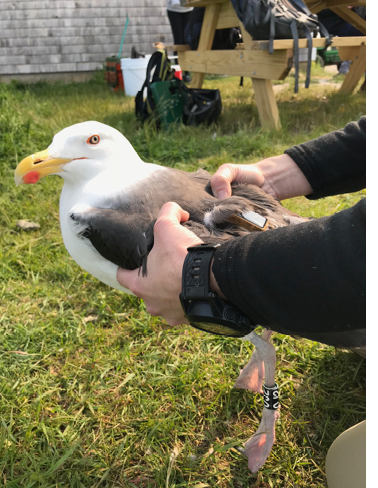
Figure 4. Banded bird 0J2 with GPS logger. Photograph by Kate Shlepr.
What drives some birds to select other colonies is unknown, but it seems unlikely that overcrowding or lack of territory on Appledore would be the cause. Gull populations in the Gulf of Maine are believed to have reached their peak sometime between the 1970s and the mid-1990s. In the state of Maine, both the overall number of breeding birds, and the number of islands that play host to gull colonies have been on the decline. Between 1977 and 2013, there was a 30% decline in the number of Great Black-backed Gull nests (Mittelhauser et al. 2016). In addition, Appledore specifically suffered a precipitous drop in the gull census in 2004 when raccoons were introduced onto the island from the mainland and consumed large numbers of eggs (Ellis et al. 2007).
Though gull numbers on the island now are either stable or slowly declining, they never rebounded from the severe predation and nearly colony-wide breeding failure of 2004. As a result, the number of birds nesting on Appledore remains well below the known capacity of the island, at least in terms of nesting sites and territories. Why the gulls have not rebounded over the nearly fifteen years since 2004 raises questions about gull population trends in the region and beyond. Much of the research focus has been on what gulls eat and how food availability may have shifted over the decades.
Gulls associate with human habitations and, as inventive foragers, often make use of human-derived food sources. Just how reliant the various species are on anthropogenic food is not fully known and may be different not just between species of gull, but between individual gulls within each species. Data from southeastern Canada correlated declines in numbers of both Herring and Great Black-backed gulls with a moratorium on groundfish fishing put in place in 1992 (Wilhelm et al. 2016). The researchers posit that the resultant dearth of discarded fish and bait thrown overboard by fishing vessels left large numbers of gulls without their accustomed food source. While this correlation does not definitively demonstrate that the moratorium caused the drop in gull numbers, we have found that individual gulls are creatures of habit, often specializing in a certain type of food, or frequenting the same stretch of beach every day month after month. Gulls that had come to rely on fishery wastes may have struggled to adapt to their sudden absence and could have faced the additional challenge of having to compete for alternate food sources, which they might have been inexpert at obtaining.
To help answer these types of questions, we placed solar powered GPS loggers on five Great Black-backed Gulls nesting on Appledore Island in the summer of 2018. All five birds had been banded in a previous year, but most of them had never been observed anywhere but the island during breeding season. We have been curious about this phenomenon—why some banded birds are seen over and over again, and others never seen at all off the colony. The loggers are extremely lightweight and are mounted to the gull's lower back using a ribbon harness around the legs (Figure 4). The logger records the bird's position every fifteen minutes, and whenever the bird returns to the island, all the data are downloaded to a base station there. We now have almost two months of data on these five birds, and, as with most endeavors in science, what we have seen has raised as many questions as it answers. One of the birds flies straight to a landfill in Rochester, New Hampshire when it leaves the island to forage. Another frequents the mud flats near Rye, New Hampshire. Several others are spending most of their time at sea, ranging from north of Portland, Maine out to sixty miles east of the island (Figs. 5 and 6).
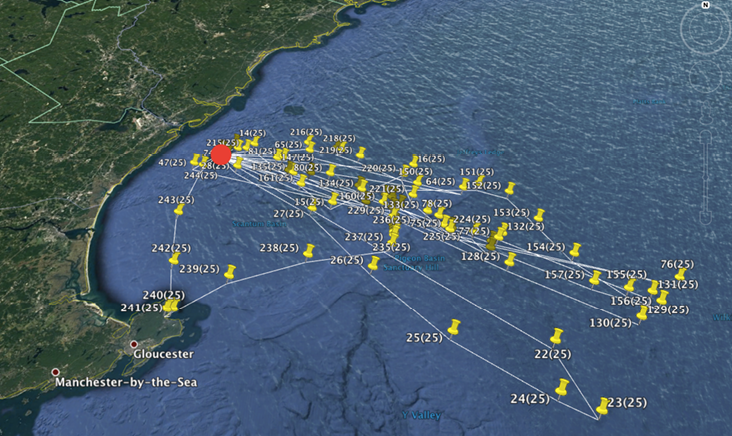
Figure 5. Band 4ET travel log. Bird's code is shown as (25) and locations are numbered sequentially. Photograph by Sarah Courchesne.
The loggers alone can't tell us exactly what the birds are doing, only where they are, and a bird out at sea might be fishing for itself or might be following fishing vessels foraging on scraps and discarded fish. We hope to obtain satellite data on ship traffic in the region and see how it aligns, or doesn't, with the paths taken by the birds. We do receive resight reports from individuals on board ships, lobstermen or fisheries observers working for NOAA, so we know at least some of our banded birds spend time riding on boats.
Whether all of our logger birds out at sea are eating fishery discards is not yet clear. It is a surprisingly difficult problem to solve. Many of the conventional ways of determining what food source an animal is utilizing cannot resolve the critical differences at issue. Techniques like stable isotopes or DNA barcoding can tell you whether a bird has been eating fish, or even what species of fish, but it can't tell you if the bird caught the fish itself or received it as a free handout off a boat. Making that determination is important for understanding population changes and making management decisions about gulls. A gull that fishes for a living will face different challenges than one reliant on the human fishing industry.
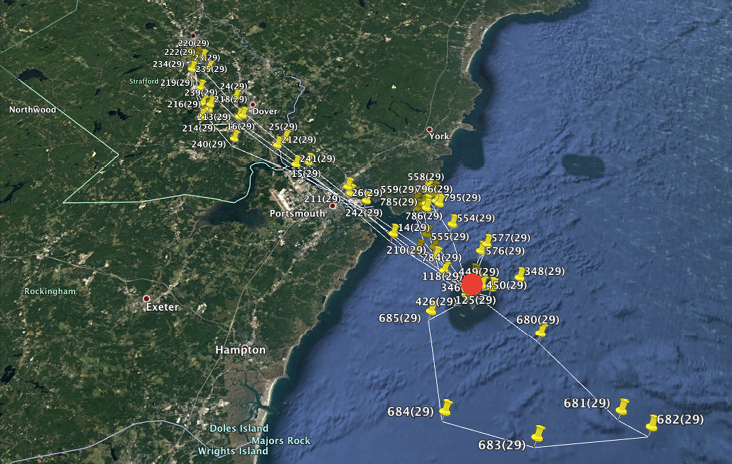
Figure 6. Band 0J2 travel log. Dot denotes Appledore Island. Each pushpin represents a position. The bird's logger code is shown as (29), and its locations are numbered sequentially as the bird traveled, i.e. 235(29), then moved to 236(29). Photograph by Sarah Courchesne.
For a long time, biology has treated individual organisms as representatives of their types and drawn conclusions at the population level. Gather up a large enough sample size, the idea was, and you could say everything about what that organism is like. Variation is the fundamental underpinning of natural selection, but that variation has often been subsumed by attention to the general behavior, the "average" bird, or the tendencies of the entire colony. What our study seeks to do is to tease apart that average and to know the birds as individuals. What is internally consistent in a particular gull? Is she an early nester every year or does the timing vary depending on conditions? Is he a crab specialist or a more generalist forager? Do all the gulls provide extensive post-fledging care to their young or are some birds more invested parents than their neighbors? Do these things make a difference, in the long run, in who survives and who doesn't? Who leaves a legacy of successful offspring and who is wiped off the genetic map?
For much of this work, we rely on observers who see our banded birds and send reports to us. The information we gather on adults continuing to feed their young even after leaving the breeding colony comes to us only because birders and casual gull watchers write in to tell us what they saw. A note that "M99 and Z09 were acting chummy," or that 2E2 and 5T9 were seen "sharing a skate meal" tells us who is caring for whom and when mates begin associating with each other before arrival on the colony.
The field season on Appledore is an intense flurry of activity. We capture and band birds, document their breeding success or failure, and identify birds that are visiting or surveying possible territories for future years. The rest of the year, when the gulls have left the island, we wait for these messages in bottles, our banded birds, to be seen and recorded on a beach, or at a wastewater treatment plant, or far out at sea on a ship's rail. Everyone who reports one of our birds is a collaborator in this research. To those who have already helped us, thank you. To those who have not yet, we offer an invitation to join us in studying these complicated, entertaining, sometimes frustrating, but always fascinating animals.
References
- Adrien, D. 2016. A Close Look at Banded Gulls. Bird Observer 44 (5): 316–323.
- Ellis, J. C., M. J. Shulman, H. Jessop, R. Suomala, S. R. Morris, V. Seng, M. Wagner and K. Mach. 2007. Impact of Raccoons on Breeding Success in Large Colonies of Great Black-backed Gulls and Herring Gulls. Waterbirds 30 (3): 375–383.
- Miller, J. B. 2018. 2E2: A Successful Gull. Bird Observer 46 (1): 40–41.
- Mittelhauser, G. H., R. B. Allen, J. Chalfant, R. P. Schauffler, and L. J. Welch. 2016. Trends in the Nesting Populations of Herring Gulls (Larus argentatus) and Great Black-backed Gulls (Larus marinus) in Maine, USA, 1977–2013. Waterbirds 39 (sp1): 57-67.
- Wilhelm, S. I., J. F. Rail, P. M. Regular, C. Gjerdrum, and G. J. Robertson. 2016. Large-Scale Changes in Abundance of Breeding Herring Gulls (Larus argentatus) and Great Black-backed Gulls (Larus marinus) Relative to Reduced Fishing Activities in Southeastern Canada. Waterbirds 39 (spq): 136-142.
Sarah Courchesne grew up in Massachusetts, lives in New Hampshire, and has been a bird enthusiast since childhood. She trained as a veterinarian at Tufts and is currently an Associate Professor of Natural Sciences at Northern Essex Community College in Massachusetts.
To learn more about the Gulls of Appledore project, or to report a banded bird sighting, visit our website at gullsofappledore.wordpress.com